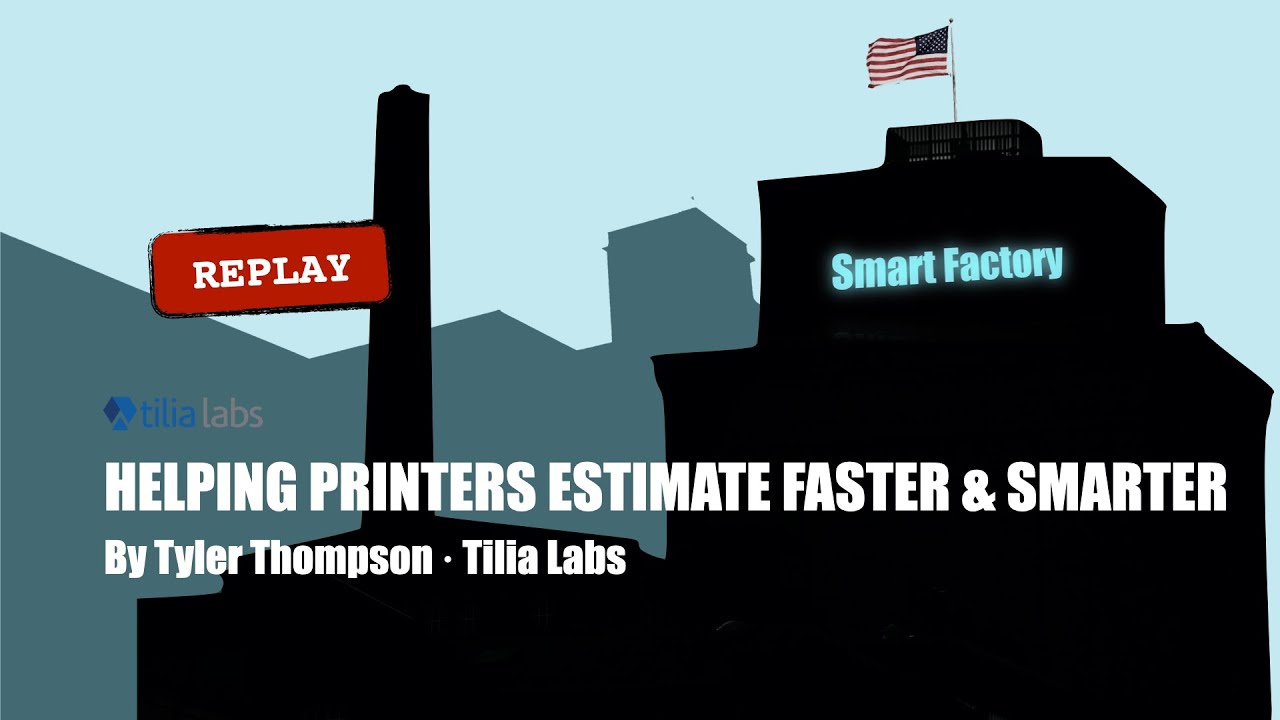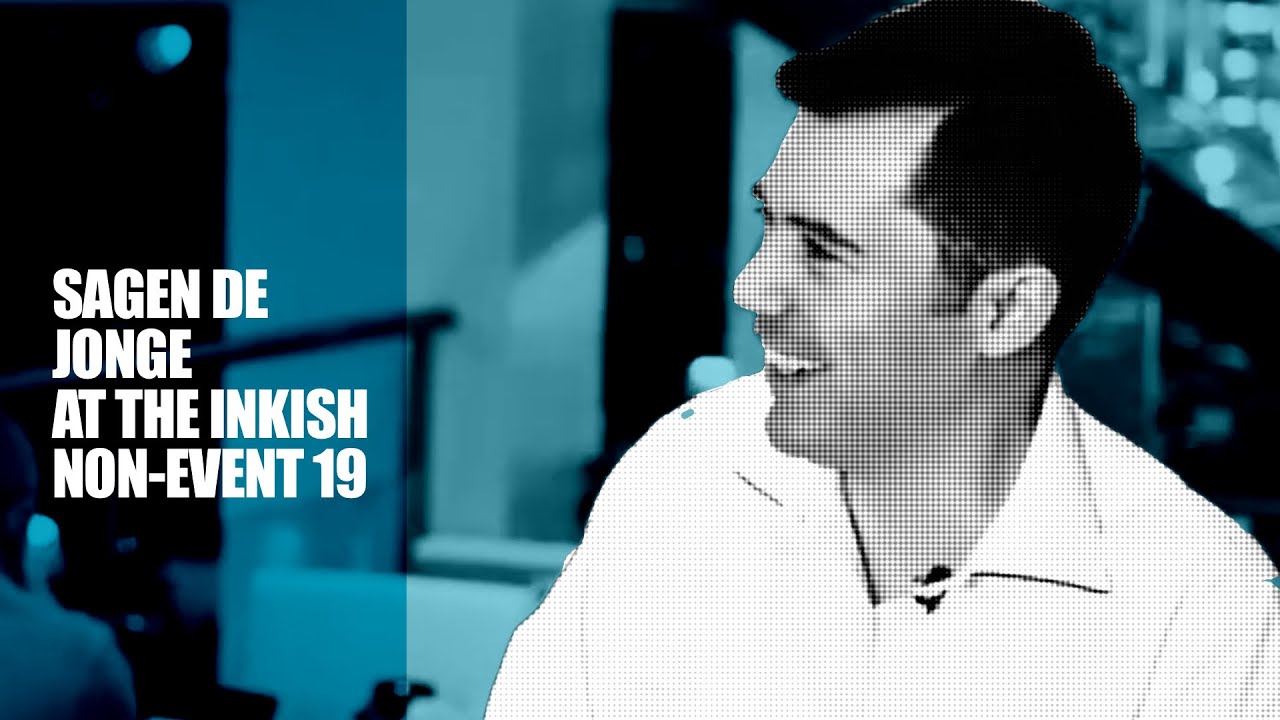Tilia Labs Makes Your Printing Company More Profitable!
Tilia Labs is one of our favorite companies in the printing industry for many reasons. One is, of course, the amazing products they do – and as you already may know – their products are all about imposition, nesting, and planning. Their flagship Phoenix is a truly versatile product that not only has a great user interface but maybe more important also feature a REST API. Many printers may not know what this is but very short; this is the interface (for programmers) that enables your MIS, ERP, Web-to-Print, what-ever software to connect and utilize the strength of the Tilia Labs Phoenix software.
The second reason why we really like this company is that of Sagen de Jonge and Scott More. The two owners are simply nice hanging out with. Their drive, motivation, and personality are just great and when you listen to the two owners, friends and brothers in arms they talk about coding, technology, market, and teaser often each other with comments that to regular​ people is just, well – secret codes?
We got to know Sagen and Scott when we did the film at The Bernard Group, and we really would like you to know them too.
You’ve got to let people dream a bit and think about the things that excite them, or at least I think that’s what would make a good company with a lot of passion.
So what we want Tilia Labs to be remembered for is that we’re a company that really focuses on innovating, innovating the technology with software for imposition planning and estimating. Imposition is very important to us and of course every printer needs to impose, but there’s so much more to the story, especially these days we think, so that’s why we’re really heavily focused on planning and estimation and automating those processes.
We saw that there’s a lot of imposition software that was out there was dated. Our first goal was really to create a more modern application that could help people. From there, we started learning more and more just by interacting with customers. One thing that came up quite a bit early on from some of the bigger customers was things like ganging and nesting and being able to do things in a more automated way and so our focus really started to turn in that direction and in the last few years that’s been the main focus for us really.
One of the reasons it’s really important is because of the way the market’s changing. So we hear this just over and over again. Customers are getting more orders and they’re getting smaller quantities, different sizes and so imposition, I think, for some companies, a long time it was fairly easy. They could say, okay, here’s a template, this covers most of our work. But a lot of companies that just doesn’t fit anymore so they’re basically just trying to impose all day long and they need to automate these processes more because they just can’t keep up.
It is a big challenge and I can’t say that we’ve figured that out 100%. But there’s a few things that we’re really seeing. Everybody has imposition software or they’re doing imposition somehow and a lot of companies are just happy to do it the way they’ve been doing it. There’s a few points we can focus on. One of the things we really focus on a lot lately is that most companies are template based and for a lot of companies that’s not working so well anymore. So we can say, here’s a solution that can use templates if you want to, but it’s so dynamic and it knows about your production. You can set up all your configuration so it knows everything about your environment. It doesn’t have to rely on that and that lets people adapt a lot quicker. So we have companies, we talked to them and they have the same prepress people that are there, but they’re doing five times the work they used to do. So, that message rings true with a lot of customers.
I think we see with almost all the customers we work with, a big boost in efficiency. Ideally, in the best case they’re able to automate more and more of the work they do. Since Phoenix is so dynamic, they can handle different kinds of work or find new efficiencies without having to add more people in order to scale up the amount of work that they process, really. I guess, to put it into once sentence it would be that boost in efficiency, that’s really our big return on investment that we see.
There’s two other things that I think really … One is reducing errors. So I think every printer, they have some number of jobs that they throw out because of some kind of problem so we’ve had many of our customers tell us that they’re able, because we can use the same software for different parts of their work flow, that they’re able to reduce the number of errors so that boosts their efficiency as well. Then the other thing is actually not even efficiency, it’s the actual media usage. So if you’re doing paper, maybe, for a company that’s doing a lot of printing, then yeah, that’s going to save them money. But we also work with companies that are using really expensive materials. So that could be plastics, or that could be flexo plates, various things. With the nesting technologies that we built we’ve been able to save companies a lot of money so they can get their ROI just on the materials alone easily within the first year.
For companies that use Phoenix for automation, most companies are getting return on investment in a month. We’ve had some companies, it’s crazy. This company that we’ve been working with recently in Spain, well Scott would be better to describe the story, but the amount of pain that they were having and we’ve only been working with them for a short period but I think they’re practically … They saw Scott in person, they couldn’t stop thanking you.
[crosstalk 00:05:02] sort of fun job sometimes. They have these peak periods where these guys weren’t sleeping for three days in a row and then crash out for a day and then go again, because they just couldn’t handle the load coming in at all. It just overwhelmed them. They tried a lot of different software and nothing could keep up and we could. Sometimes it hard to explain in just a single sound bite why customers experience the kind of return on investment that they get. Because it does vary. There’s a number of stories. If you look at other systems and you just look at a list of features. Okay, they have that. We have that. The algorithms we have and the speed at which we process things and those kind of details. The under the hood, the engines that are running, our software are so efficient and can catch errors more and we port it a lot of time into the algorithm side to simplify the life of the operator.
Some MIS systems do that, but I think we go a step further. It’s a really complex problem. If you’re a company that has 1,000 orders coming in every day and all those orders are different sizes, different quantities, different colors going to different clients, then okay, a lot of customers will just say, okay, just print those all by themselves. But some customers, they just can’t do that. That doesn’t work with their margins, so they have to gang them up and that’s a really complex problem and doing the planning, the estimating around that is where we can really help them.
That’s right and that been one of the biggest challenges for us, but also the most exciting areas is to be able to use cutting edge, machine learning algorithms to plan and [inaudible 00:06:56] it’s a really hard problem. That’s why a lot of printers are struggling with it, is because it’s just combinatorial nightmare. There’s millions and millions of combinations and you have only a certain amount of brain power or computing power to figure out the best way to do things and that’s one of our big advantages. It’s kind of hard to explain, potentially, but when start using Phoenix, you can see it right away.
Phoenix is both. We have some customers where they actually just do the estimating and the planning right in Phoenix. And then we have some customers where it’s plugged into their MIS system and because of our automation, because using [inaudible 00:07:36] API for example, they don’t even use Phoenix. They’re using their MIS system and it uses Phoenix as an engine. So we can do both of those things, it just depends on the customer’s requirements really.
We invest a lot in our future, so at least three or four times we’ve done very big refactors in our [inaudible 00:07:55] base because we’ve seen okay, we’ll let’s try to design with changes in mind for the future, but you can’t predict everything. So there has been several times where we really have to refactor and it’s been very painful because we don’t have any new features for a few months or a long time. But we do it because we know it’s going to set us up to where we want to be and it’s really after we’re done we’ve really thanked ourselves because then we’re able to move a lot faster.
Yes, absolutely. I mean, even within our market there’s still quite a few people who don’t know us and I think that’s a big challenge we have. We’re all engineering minds, so starting a company, Sagen and I, it’s been a learning experience getting into marketing and sales and it’s been part of the fun as well, but I think we’re gaining more traction now and that’s been one of the bottlenecks, I guess, to our growth. There’s that and we have a lot of ideas about where we can go and want to go as well. That’s really what we love to do again. [inaudible 00:09:02] is build new things and that’s what excites us.
It’s been very good for us in some ways, because we’re able to cover different time zones with support and we do have customers all over the world and resellers all over the world. So that has been very good because we’re small. But it also makes it difficult communicating. We’ve gotten really used to using Skype and things like this but there’s times where you just want to be in the same location, so we try and meet up fairly often, but it’s not always possible. That part has been a bit of a challenge sometimes.
We got into a good rhythm with it and one of the challenges obviously is the time difference and we do a lot of business in Europe and the States, so get a lot of late night meetings, but for me it works out personally, because I’m more of a night owl.
We like to think of ourselves as agile and because I worked at other companies and so has Scott, where these things are so disconnected. Support doesn’t talk to development. Development doesn’t talk to sales and so we do these different things. I do sales, but I also am part of development so if a customer asks us something, I don’t have to say, okay, I’ll get back to you in a month after a bunch of meetings and a bunch of other decisions. Scott and I have a talk, say okay, does this make sense, is this something we want to do and sometimes we’ll turn around in a few weeks with a new feature. We can’t do that all the time, but we do have that potential. I think that’s been a really big reason for our success and it’s also really important to us as a business to be able to do that. You’ve got to let people dream a bit and think about the things that excite them. Or at least I think that’s what would make a good company with a lot of passion.
I think there’s probably two areas to talk about if you want to know why we’re different. I think one of the really big ones is usability and that’s actually across the board. We focus on usability so much. We focus on usability in the interface which is extremely important for anyone actually using Phoenix, manually using the desktop interface every day. We focus on usability of automation APIs, because if you’re going to integrate that, that can be a complex thing in the first place. But we try and make it as easy as possible. I think that really it’s hard to narrow that, what does that mean exactly? But our feedback from our customers is that they started using it. This is so easy to use. I just was able to do this, this takes me hours. Now I can do this in a few minutes. That’s a big focus for us and it really makes a big difference.
Your planning and prepress, is that a limit to your production? Are you utilizing your production? Are you turning away work that you could be doing? Are you making sacrifices to material use in order to get jobs out on time because that’s a bottleneck for you? Those are questions, I think, that would be good to ask. And another one is, are you automated? Is your imposition automated? And even if it is, are you constantly creating new templates to deal with different kinds of work or are you building overly complex work flows to get around issues with your current imposition? Those are areas or themes that we see over and over again.










































































